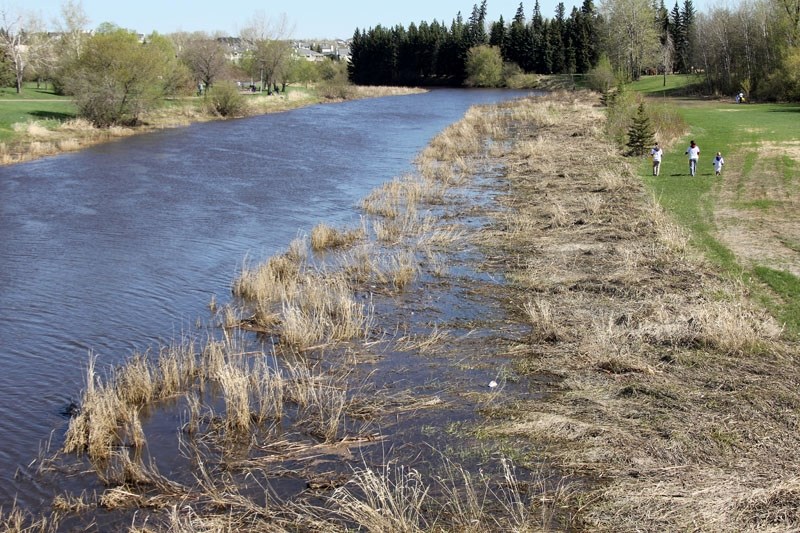The Sturgeon River has too little oxygen to support most fish, local researchers have found, but that could change if we treat it right.
Laurie Hunt and Debbie Webb presented the first results of the ongoing Northern Alberta Institute of Technology's research project on the Sturgeon River to the St. Albert environmental advisory committee last week. The study, now in its second year, has about 20 students doing experiments on fish habitat and water quality throughout the river's watershed.
Students took readings at about 49 sites along the river, says Webb, a researcher at NAIT, testing for flow rates, conductivity (a proxy for salt levels) and other factors.
Readings suggest the river contains more than 0.05 milligrams of phosphorous per litre, says Webb — levels that the province says would harm aquatic life over an extended period. "If this was a lake, it would be considered eutrophic [i.e. turning into land]."
Oxygen levels vary by location and time of day, says Hunt, associate chair of biological science at NAIT, but were generally below 5.0 milligrams per litre — levels the province says would harm aquatic life after a few minutes or days. "Walleye, perch, [lake] sturgeon … these species used to be part of this river ecosystem," she says. Now, they are relatively rare, with smaller fathead minnows more dominant.
Detailed data
Part of the reason for the poor readings is geography, says Hunt, who lives in St. Albert. "It's a low-flow, low-volume river with a lot of high-nutrient soils," she says. "The Sturgeon River is never going to be the North Saskatchewan."
It also has a lot of bridges. The NAIT team examined about 101 stream crossings in the watershed to determine their effects on fish habitat, Hunt says. About 73 were found to be sources of sedimentation, which interferes with fish movement and habitat, while about 25 were clogged with debris or beaver dams.
Most of these problems were due to poor bridge design (no gutters) or maintenance (grit left on the deck). Local governments have been made aware of the problem bridges, Hunt says, and could use this information to prioritize their repairs.
The team also did a more detailed study on the effects of snow spraying off St. Albert bridges due to plows. After one of their members noticed the long strips of grit that built up under the city's bridges in the winter, the team decided to test snow and water at each bridge before and after the spring melt.
"It was just as you'd expect," Hunt says of the results: the team found significant amounts of grit and salt under each bridge before and after the melt at levels that could degrade fish habitat.
City staffers are now looking to change their plowing methods to reduce the amount of grit that blasts off bridges, says Leah Jackson, St. Albert's manager of the environment. "It'll have to be specific to each bridge," she notes, as bridge width and traffic speed all affect the rate of deposition.
Further study
The big plus with this research compared to previous river studies is that it is on a watershed-wide basis, Jackson says. "Yes, we know [the river's health] is compromised," she says, but this research will help communities identify hotspots for treatment.
NAIT students will take more water readings this summer, Hunt says, and will also assemble a database on fish and wildlife in the watershed.
"If we don't change the direction we're headed in," Hunt says, "[the river] is going to continue to get a lot worse." The changes we make today will take decades to affect the river. "We're looking at strategies that are going to impact the health of the river for our kids and grandkids, not for us."
Hopefully, she says, in 150 years time, our impact on the Sturgeon will be virtually invisible. "Maybe some of those fish will come back."
For details on the NAIT study, email Hunt at [email protected].




